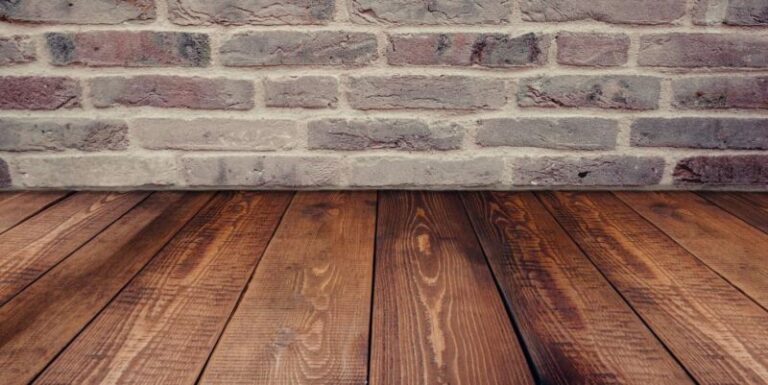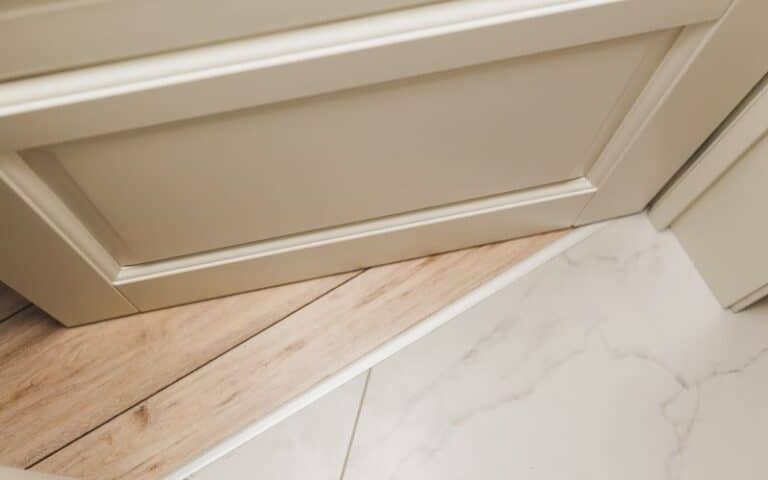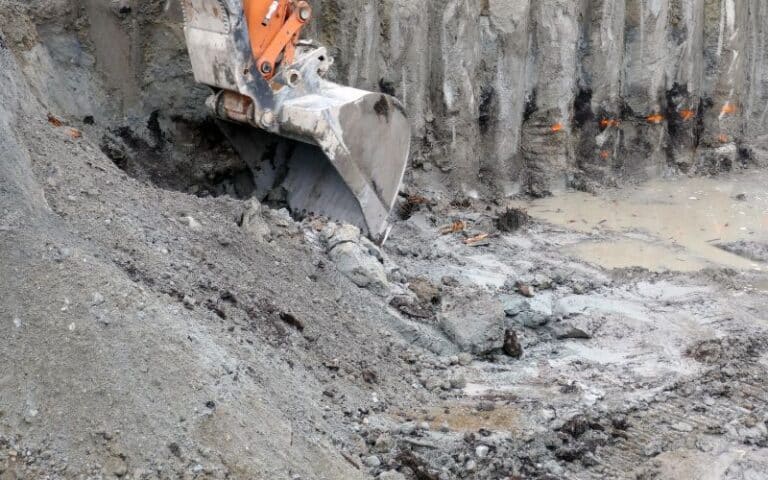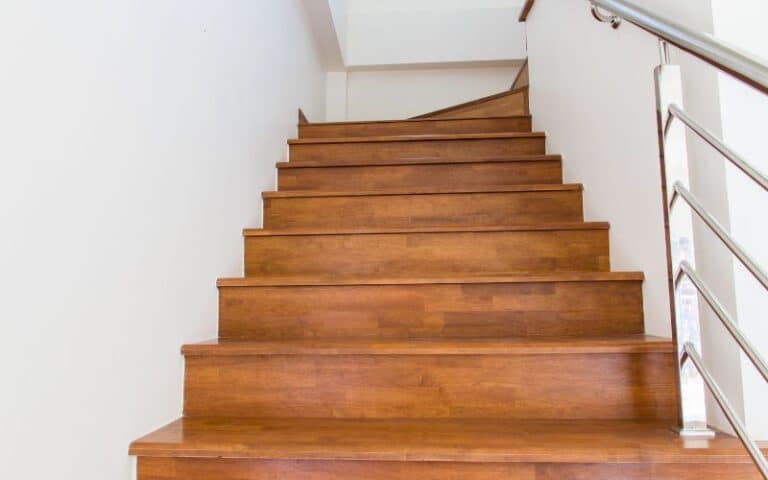Even the most perfect flooring starts to lose beauty as time passes on. Truly, it can be unsettling to have your subfloor begin to look ugly.
If the color changes are noticeably unattractive, it can even become more alarming. Black mold on the subfloor reduces the beauty of your home’s interior design and can irritate it.
Sadly, water damage is basically the main cause of black mold.
Water damage brings about a moist environment that helps mold to grow perfectly. Mold spores are present everywhere around us. They come in contact with damp surfaces, like a wet subfloor, reproduce rapidly, and change from their original white color to black.
In this article, you will learn why water damage attracts black molds.
This article will also help you to understand the dangers of black molds and how to prevent and remove them from subfloors.
Ready for a Flooring Quiz?
Why Does Water Damage In Subfloors Attract Black Molds?

Water damage in subfloors attracts black molds because it creates a helping environment for their growth. Molds produce small, compact reproductive structures.
With the help of air, these spores settle on many surfaces like walls, ceilings, floors, and other materials.
You can also find these microscopic organisms in the air we breathe. They may not be harmful when they are airborne or in small quantities.
However, problems arise when the spores find a suitable environment to settle and reproduce.
Mold spores can be everywhere, even though they need certain conditions to grow.
First, they need a moisture source. They also need an organic material to feed on (such as wood, drywall, or carpet) and the right temperature range.
Water damage provides the necessary moisture element. When water moistens a subfloor due to leaks, flooding, or other waterways, it creates a damp environment.
The mold spores that settle on the affected surface take advantage of the dampness to breed.
When they finally contact moisture and organic materials, mold spores start sprouting into something visible.
Subfloors are mostly wood-made or other organic materials. So, as the wood absorbs moisture, it serves as a nutrient for the mold.
Mold roots, called hyphae, enter the wood or other materials to break down their structure and further encourage mold growth.
As the mold area begins to expand, it becomes noticeable. Regrettably, it often appears as a black or dark greenish-black patch.
Aside from reducing the beauty of your interior design, black mold also produces mycotoxins, which can harm humans and pets.
They release these mycotoxins into the air, where they can be inhaled or come into contact with the skin.
It will potentially cause respiratory problems and other health issues, especially in individuals with preexisting sensitivities or allergies.
How To Prevent Black Molds In Wet Subfloors?
Taking precautions against black mold on wet subfloors will help keep your interior environment safe and healthy.
Black mold is a particularly concerning type due to its potential health risks. You can only prevent it from growing and spreading if you control moisture.
Below are some measures that can help you prevent black mold in wet subfloors:
#1. Proper Ventilation
First and foremost, you need proper ventilation in your home to prevent black mold from growing and spreading.
When there’s effective ventilation, there’s enough air to reduce humidity levels within your home or building.
But when air is stagnant and moisture accumulates, it can create a suitable breeding ground for mold spores.
Stick to sufficient ventilation to help prevent black mold from growing and spreading in your home.
#2. Address Water Leaks Or Spills Promptly
Addressing water leaks or spills on time is equally important. Deal immediately with any source of excess moisture, be it a leaking roof, plumbing issues, or flooding.
If your subfloor is persistently damp, it can result in favorable mold growth and spread conditions.
While this may be true, thoroughly drying and cleaning affected areas can help prevent mold spores from settling and growing.
#3. Maintain Low Indoor Humidity Levels
Maintaining low indoor humidity levels is also important to prevent black mold growth and spread.
The Environmental Protection Agency recommends indoor humidity levels between 30-60%.
When the humidity is high, it encourages mold growth. However, keeping it within this range can help deter mold spores from germinating and distributing.
If you live in highly humid areas, you should use dehumidifiers. Dehumidifiers help remove excess moisture from the air, which creates an environment less conducive to mold growth.
Always monitor and empty the dehumidifier to ensure that it continues to be effective.
#4. Apply Sealants or Waterproof The Subfloor
Applying sealants or waterproofing the subfloor creates an environment that is hostile to mold growth. Sealants and waterproofing products form a protective barrier on the subfloor surface.
They prevent water, moisture, and other liquids from entering the subfloor material. Sealing can greatly reduce the chances of moisture accumulating on the subfloor, a basic mold growth factor.
These measures can help to keep your subfloors and living spaces mold-free and safe.
Are Black Molds In Subfloors Dangerous?
Yes, black molds are dangerous. When present in your subfloor, they can pose serious dangers to both your health and the structure of your building.
Specifically, exposing yourself to black mold can cause various health issues and worsen existing conditions.
The following health problems have something to do with exposure to black mold:
#1. Respiratory Issues
Inhaling black mold spores or mycotoxins can irritate the respiratory tract. It leads to coughing, wheezing, shortness of breath, and throat irritation.
People with asthma, allergies, or chronic respiratory conditions may experience worsened symptoms.
#2. Allergic Reactions
When you continuously have contact with black mold, it can trigger allergic responses. It can cause symptoms like sneezing, runny or stuffy nose, itchy or watery eyes, skin rashes, and allergic dermatitis.
#3. Fatigue and Headaches
Some people exposed to black mold may experience persistent fatigue and headaches. When this symptom shows up, there is difficulty concentrating and general malaise.
#4. Neurological Symptoms
Many reports show that exposure to mycotoxins from black mold leads to some neurological symptoms.
Some of these symptoms may include difficulty thinking, memory problems, and mood swings.
#5. Immune System Suppression
When you continue to expose sensitive body parts to black mold, it may weaken your immune system.
Continuously exposing yourself to mold spores can make you more susceptible to infections and illnesses.
#6. Digestive Issues
Although less common, ingesting mycotoxins can cause gastrointestinal issues such as nausea, vomiting, diarrhea, and abdominal pain.
Notably, symptoms’ severity can vary based on many factors. They include the individual’s overall health, duration and intensity of exposure, and any preexisting medical conditions.
If you suspect black mold exposure and are experiencing persistent or severe symptoms, please seek medical attention.
It will help for proper diagnosis and management of your health concerns.
The table below provides additional information about the effects and prevention of black mold on subfloors.
| Effects of Black Mold | Precautions |
|---|---|
| Causes damage to your building | Always keep your home ventilated and your floors moisture-free. |
| Decreases property value | Practice regular maintenance, including mold removal. |
| Has long-term health effects | Remove molds immediately after they appear, doing so with proper safety precautions. |
How To Remove Black Molds On Subfloors?
Trying to remove black mold on your subfloor may be stressful, but the result is worth the stress anyway.
Moreover, always put safety first before thoroughness when dealing with black mold.
Always wear protective gear like gloves, goggles, and a mask so you don’t expose your eyes and nose to mold spores.
Below is a step-by-step guide on removing black mold on your subfloor.
- Ensure to seal off the area where black mold affects the subfloor to prevent mold spores from spreading to other parts of the house.
- Use fans or dehumidifiers to dry your subfloor.
- Use water and gentle detergent to scrub the affected areas, then rinse with clean water.
- Use a commercial mold remover to treat the affected areas.
- If the mold has penetrated deeply, sand the subfloor to remove the affected wood.
- Mix water and borax and apply them to the subfloor to prevent the mold from growing further.
- Replace severely damaged wood or repair if possible.
- Ensure there’s proper ventilation and moisture control to prevent mold from reforming.
- Safely dispose of materials that can’t be salvaged, following local regulations.
- Consider consulting a professional mold remediation service if the mold inserts your subfloor extensively.
FAQS
How Long Does It Take To Remove Black Mold From Subfloors?
The time needed to remove black mold depends on how severely it spreads on the subfloor.
It can take you from a few days to a couple of weeks to totally remove and remedy your subfloor.
Can I Use Bleach To Remove Black Mold?
While bleach can kill mold on non-porous surfaces, it affects porous materials like wood differently.
It would be best to use specialized mold-killing solutions or seek professional advice for safe and effective mold removal.






